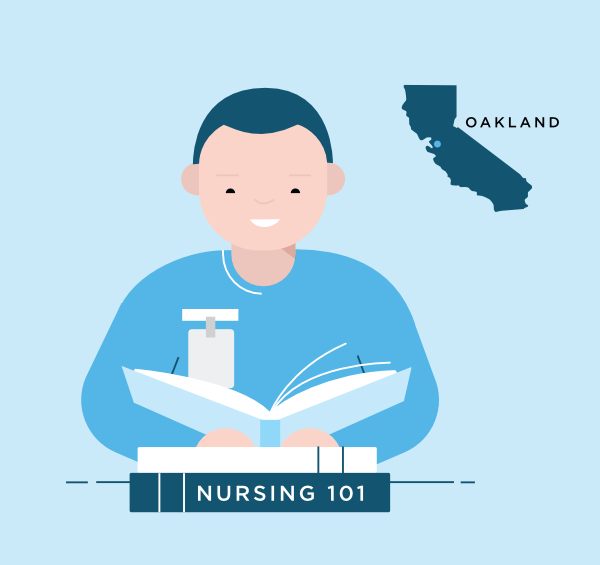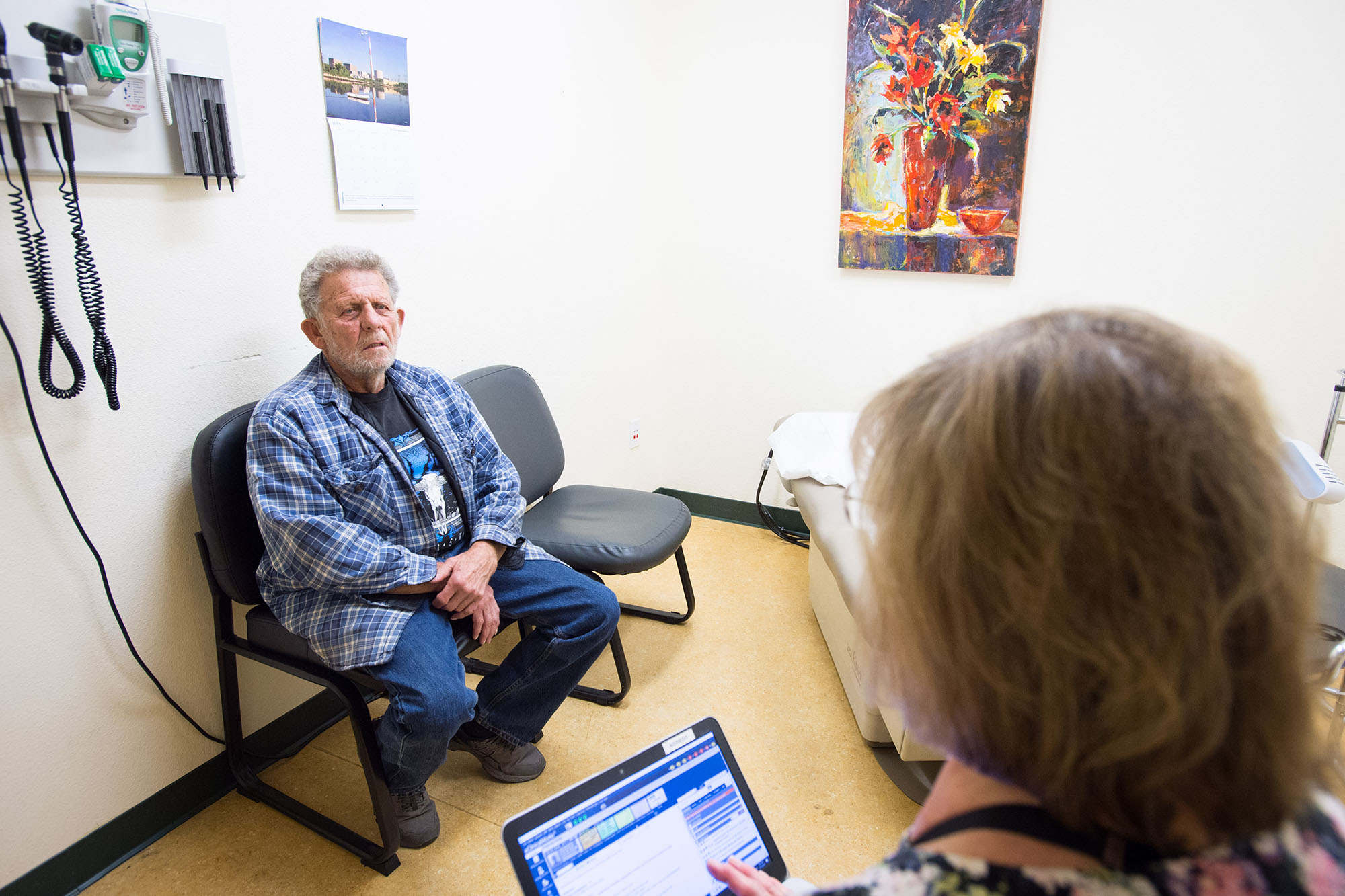View the Report
Jump to All Downloads & LinksSummary

People who buy their own health insurance bear higher costs of coverage and care than those who are insured through employers. Under the Affordable Care Act, premium subsidies and cost-sharing assistance help make health insurance much more affordable for many Californians who purchase their own coverage. Still, many Californians in the individual market struggle to afford health insurance premiums as well as their out-of-pocket costs for health care services. Others choose to forgo coverage altogether due to cost. Understanding the factors that affect affordability can set the stage for policy discussions about how to help all Californians stay covered.
Need a terminology refresher? We’ve spelled out some basic health insurance cost vocabulary for you below.
Key Vocabulary
We’ve compiled some basic health insurance cost terms and defined them for you. Understanding these key terms and concepts related to health insurance costs will help you navigate a discussion about affordability.
Actuarial value (AV)
The average percentage of benefit costs covered by a health plan product. A plan’s AV indicates how generous the coverage is. An AV of 60% means that, on average, insurance covers 60% and consumers pay the other 40% for covered services through copays and other out-of-pocket costs. AV does not take into account premium costs.
Metal tiers
The ACA assigns metal tiers to plans based on their AV: bronze (60% AV), silver (70%), gold (80%), and platinum (90%). For more detail on metal tiers, visit www.coveredca.com.
Out-of-pocket (OOP) costs
Costs a consumer must pay to receive health services covered under their plan. Out-of-pocket costs are sometimes broadly referred to as “cost sharing” and are in addition to premiums. Out-of-pocket costs include:
- Deductible. The amount a consumer pays for covered health care services before their health plan starts paying. For example, a consumer with a $2,500 deductible will pay for up to $2,500 of medical services each year before their insurance starts to pay. Deductibles do not apply to certain services, such as preventive care and, for plans offered through Covered California, many other services.
- Copayment. A fixed amount a consumer pays for a covered health care service when services are received. For example, a consumer might pay a $15 copay at the doctor’s office for a visit. The amount can vary by the type of covered health care service.
- Co-insurance. Similar to a copayment but instead of a fixed amount, the consumer pays a percentage of a charge for a covered health care service. For example, a consumer might pay 10% of the cost of an x-ray, while the plan pays the other 90%.
Out-of-pocket maximum (OOP max)
The highest amount that consumers are required to pay for their share of covered services each year. After the consumer share hits this limit, the plan pays 100%. The out-of-pocket maximum does not include premiums or the cost of care not covered by the plan.
Premium
The fixed monthly amount that must be paid to maintain health coverage. With ESI, monthly payments are shared between employer and employee. For example, under a generous employer plan, the employer might contribute 90% of the premium while the employee pays 10% through regular payroll deductions. Consumers in the individual market have no employer to help pay their premium, although some receive premium subsidies (see the section on The ACA & Affordability).
The Individual Market
What Is the “Individual Market” and Why Is It Important?
California’s individual health insurance market is a crucial backstop for people who cannot access affordable health insurance the way most Californians gain coverage — through jobs, Medi-Cal, and Medicare. Californians who don’t have access to these common types of health insurance can buy coverage for themselves and their family members through the individual market. Coverage may be purchased by individuals either through Covered California, the state’s ACA-established health insurance exchange (or “marketplace”), or directly from an insurer “off-exchange.” Under federal law, to purchase through Covered California, Californians must meet immigration and other documentation status requirements. Together, the plans offered through Covered California and those available directly to individual purchasers off-exchange make up the “individual market.”
Prevalent Sources of Health Insurance
Most insured Californians get their health coverage through:
- Jobs. Getting health insurance through your job or your partner’s or spouse’s job is called employer-sponsored insurance (ESI). Health coverage through CalPERS is one example of ESI.
- Medi-Cal. This public program covers most Californians with low incomes.
- Medicare. This public program covers most people over age 65.
If not covered through these means, people turn to the individual market.
People in the individual market typically include:
- People who are self-employed
- Early retirees who don’t yet qualify for Medicare
- Contract, part-time, or full-time workers who aren’t offered health benefits through their jobs
- Workers whose employer-sponsored insurance (ESI) is very expensive
Often, it includes people who are going through some kind of major life transition. Californians who rely on the individual market may have recently:
- Gotten a pay raise or changed jobs and now earn too much to stay on Medi-Cal
- Lost a job and, with it, their ESI
- Lost a spouse whose job provided family coverage
- Aged off their parents’ ESI plans
Many consumers who rely on the individual market have modest or unpredictable earnings.
About 2.2 million Californians currently get coverage through the individual market (about 1.3 million buy through Covered California, and the rest purchase coverage off-exchange). That compares to the roughly 18 million who get ESI and 13 million who get Medi-Cal. (For more about Covered California and the individual market, see Health Policy Essentials: Covered California and Individual Health Insurance [PDF] from the Insure the Uninsured Project.)
To summarize, the individual market covers a relatively small number of people, compared to other sources of insurance, but it plays a critical role by serving people without any other coverage options. Without affordable individual coverage, these consumers would become uninsured.
The individual market covers a relatively small number of people compared to other sources of insurance, but it plays a critical role by serving people without any other coverage options. Without affordable individual coverage, these consumers would become uninsured.
How Affordable Is Coverage? It Depends on Both Premiums and Out-of-Pocket Costs.
The affordability of health coverage is often judged based on the monthly premium cost, which you pay if you use care or not. But OOP costs, which apply only when you get care, can also be a significant financial burden for consumers. Plans with higher premiums typically impose lower OOP costs and vice versa.
Assuming you can afford it, if you have numerous or expensive health care needs, you might choose a plan with a higher monthly premium to reduce the risk of having high out-of-pocket costs. If, however, you think you will not have that many health care needs in the coming year, you might choose a plan with a lower monthly premium, anticipating that your risk of big medical bills will be small.
But health care needs are not all foreseeable. Accidents happen, and illnesses can come about suddenly. And people’s choices are limited by what they can afford.
How Is the Individual Market Different from ESI?
Although some people with ESI struggle with the high cost of health care, affordability challenges tend to be worse for those on the individual market. A fundamental reason is that those with ESI have an employer who pays part (often a big part) of their health insurance premium.
Before the ACA, Californians with individual coverage had to shoulder the full premium and were very sensitive to premium differences. They often chose products that imposed higher OOP costs to keep premiums more manageable.
The ACA was designed, in part, to address the financial vulnerability of consumers whose only path to coverage is through the individual market (see the The ACA & Affordability section for more detail). Even though the ACA provides federal financial help to make coverage more affordable for many who rely on individual coverage, those in the individual market still generally do not enjoy as much financial protection as those with ESI.
The ACA & Affordability
The ACA reformed the individual market in many ways. Two particularly important provisions address affordability: premium subsidies and cost-sharing reductions (CSRs).
Premium Subsidies
Under the ACA, consumers who earn less than 400% of the federal poverty level (FPL) (up to $48,560 for an individual, or $100,400 for a family of four for coverage effective in 2019) and meet immigration and other documentation requirements can obtain Advance Premium Tax Credits, commonly referred to as “premium subsidies,” through Covered California. See table below.
Premium subsidies are set along a sliding scale, meaning that those earning less get more help. Consumers who qualify for premium subsidies are assured a silver plan at a premium that does not exceed a certain percentage of their income (see Figure 1). For example, someone earning 139% FPL is required to pay no more than about 2% of their income on premiums, while someone earning 300% FPL pays a little less than 10% of their income. Notably, the cap on premium costs is the same for those earning 300% FPL as for those higher up the income scale at 400% FPL. The difference between the total premium and what the consumer pays is offset by the premium subsidy.

The consumer’s subsidy can be used to buy any level of coverage. If consumers want a more expensive plan, like gold or platinum, they can apply their premium subsidies toward the more expensive plan, but they would make up the difference in cost between the silver and the more expensive plan, thus paying a greater share of their income toward the premium. On the flip side, consumers can save money on premiums by choosing a lower-priced plan — for example, bronze or lowest-cost silver — where their subsidy will cover a greater share of the premium.
Cost-Sharing Reductions
Recognizing that OOP costs can be a burden for consumers with low incomes, the ACA requires plans to offer products with lower OOP costs for those earning up to 250% FPL ($30,350 for an individual). “Cost-sharing reductions” lower deductibles and copays if and only if eligible consumers choose “enhanced silver” plans through Covered California. These plans are called “enhanced” because they charge silver plan premiums but offer greater protection from OOP costs. (For more detail on these plans, see 2019 Patient-Centered Benefit Designs and Medical Cost Shares.) People earning more than 250% FPL are not eligible for help in lowering their OOP costs.
Many Californians with low and moderate incomes are better able to afford health coverage through the individual market because of these ACA provisions. Today, about 1.2 million Californians receive premium subsidies through Covered California, and about 600,000 receive help with their OOP costs through plans with cost-sharing reductions. Following the implementation of the ACA, the number of Californians participating in the individual market rose, helping to drive the state’s uninsured rate to an all-time low by 2017.
But some people don’t benefit from subsidies and may not have other affordable options, in particular:
- Californians without documentation who, under the ACA, are prohibited from buying coverage through Covered California or accessing any affordability assistance.
- People earning above 400% FPL ($48,560 for an individual), who aren’t eligible for premium subsidies under the ACA. This group is particularly vulnerable to affordability challenges on the individual market as premiums rise over time.
Affordability Today
The ACA has made coverage on the individual market more affordable for many Californians. Of the 2.2 million individual-market enrollees in California, about half are at income levels that allow them to receive ACA premium subsidies through Covered California. About 600,000 benefit from additional cost-sharing reductions to lower their out-of-pocket costs such as deductibles and copays. Despite the progress made under the ACA, affordability continues be a significant barrier to coverage on the individual market.
Many in the Individual Market Report Difficulty Affording Coverage.
A recent survey of Californians purchasing coverage through the individual market found that a significant portion report difficulty paying premiums (40%) and OOP costs (31%). Almost one in four (24%) report that they have delayed or avoided care due to cost (see figure below). People with lower incomes and those in fair or poor health are particularly likely to say that they delayed care or had trouble paying for care.
Despite ACA, Individual Market Enrollees Generally Pay More and Get Less Than Those with ESI.
Because ESI is the most common form of coverage in California, it is often considered a benchmark for comparison with coverage from other sources. As described previously, consumers in the individual market face higher premiums and tend to have more OOP costs than those with ESI, mainly because they aren’t helped by an employer paying a large part of the cost of coverage. Despite gains under the ACA, ESI remains more affordable even when the comparison is limited to those who qualify for ACA subsidies.
Premiums: Subsidized Individual Market Versus ESI
On average, individual-market enrollees who receive ACA premium subsidies pay higher premiums, and a higher share of the total premium, than those with ESI. See figure below.
Out-of-Pocket Costs: Subsidized Individual Market Versus ESI
Individual-market enrollees who receive premium subsidies are much more likely to have a deductible than those who get insurance through their employer (see figure below). In most Covered California plans, doctor visits, emergency room care, lab tests, x-rays, and imaging are not subject to deductibles. However, over a quarter of subsidized Covered California enrollees had deductibles over $6,000 through bronze plans that allow three office visits at $75 but then impose a deductible on most services.
Individual-market enrollees who receive premium subsidies also tend to be enrolled in products with higher OOP maximums than those with ESI (see figure below). This means that they risk serious financial consequences if they have extraordinary medical needs.
Particularly for Those Not Eligible for ACA Tax Credits, Premium Affordability Depends on Where You Live and How Old You Are.
Average total premiums in California’s individual market vary considerably by region. Those who receive premium subsidies are somewhat protected from the higher premium costs in high-cost regions because the amount they pay is linked to a percentage of their income. (See The ACA & Affordability section for more detail.) However, the roughly one million individual-market enrollees who don’t qualify for tax credits must pay the full premium, making them much more vulnerable to premium differences related to region and age. The figure below shows the average premiums that unsubsidized Covered California enrollees paid in 2018. Those living in the most expensive region (Monterey Area) paid 70% more in premiums than those living in the cheapest region (Los Angeles, Northeast).
Compared to younger people, older people typically need more health care and thus are more expensive to insure. The ACA limited the amount that insurers can vary premiums based on age, but older consumers can still be charged premiums three times as high as their younger counterparts. Without subsidies, older individual-market consumers face high premiums.
Affordability Challenges Contribute to Declines in Coverage.
The factors that cause people to rely on the individual market in the first place, such as losing or changing jobs, or losing a spouse, lead to steady turnover (or “churn”) in enrollment in Covered California and in the individual market. Often people leave the individual market because they qualify for other coverage options, such as ESI or Medi-Cal. But concerns about costs — felt especially by Californians without subsidies — are a big reason people drop coverage. Californians in the individual market consider their monthly premium alongside other household spending priorities such as rent, food, and childcare. When premiums and OOP costs add up to a large share of your household’s income, you might decide that maintaining coverage is beyond your reach and choose to go uninsured.
Scenarios: Curtis, Carmen & Sam
Despite great progress under the ACA, many Californians in the individual market still struggle to afford coverage and care. To help illustrate these issues, meet Curtis, Carmen, and Sam — fictional characters who represent real-life scenarios faced by consumers in the individual market.

Meet Curtis
Curtis, age 30, lives in Oakland and earns $18,210 (150% of the federal poverty level [FPL]). Curtis works part-time as a home health aide while he goes to community college to become a nurse. Under the ACA, he is eligible for premium subsidies and cost-sharing reductions (CSRs) that limit both his premium and out-of-pocket costs. Absent premium subsidies, he would pay more than 20% of his income for monthly premiums and still be responsible for high out-of-pocket costs. Under the ACA, he can enroll in an enhanced silver plan with CSRs and pay $37/month in premiums (2.4% of his income). The plan provides office visits with a $5 copayment, emergency care at $50, and caps his annual out-of-pocket spending at $1,000. For Curtis, the affordability benefits of the ACA are dramatic.
However, Curtis doesn’t earn a lot and may be tempted to enroll in a bronze plan with a $1 monthly premium. If he does, he risks incurring much higher out-of-pocket costs when he obtains health care. In a bronze plan, his first three office visits would cost $75 per office visit. But if Curtis is hospitalized and needs many additional services, he could be responsible for paying as much as $6,300, the bronze plan deductible.

Meet Carmen
Carmen, age 44, lives in Fresno and earns $33,385 (275% FPL). She works from home as a freelance bookkeeper. Enrolled in a silver plan, she qualifies for subsidies that reduce her monthly premium by more than half, from $412 to $205 (7% of her income). ACA premium subsidies help Carmen, but not to the same extent they assist Curtis.
She has several chronic conditions, including diabetes and kidney disease. She chose her plan because its network includes the doctors and hospital she wants. Her premium alone represents 7% of her income; in the worst-case scenario, if she incurs out-of-pocket costs up to the $7,550 maximum, her total spending on premium and care could reach 30% of her income.
Carmen earns too much to qualify for cost-sharing reductions. She can choose bronze and pay a lower premium, or higher-premium silver or gold options that limit her initial out-of-pocket costs. No matter which of these three metal tiers she chooses, if she is repeatedly hospitalized and uses many additional services, her combined premium and out-of-pocket spending could impose a high annual spending burden (26% of income under bronze coverage and 31% of income under gold).

Meet Sam
Sam, age 62, lives in Sacramento. Last year he earned $49,167, just over the 400% FPL threshold for premium subsidies under the ACA. Sam is a real estate agent and has always had to buy his own coverage. He is happy that he can’t lose his coverage just because he gets sick, but as he’s gotten older, his premiums have risen a lot. He bears the full cost of market premiums and could incur high out-of-pocket costs as well. Although he has chosen the lowest-cost bronze plan, its $794 monthly premium nevertheless consumes 19% ($9,527) of his yearly earnings. (To show how much Sam’s age matters, consider that his 24-year-old neighbor can buy the same unsubsidized bronze plan for a monthly premium of just $276.) The plan has a $6,300 deductible, and while Sam doesn’t have a lot of health problems now, at his age he worries that a serious health episode could arise anytime.
An alternative option for Sam, a gold plan with a monthly premium of $1,154 (28% of income) would require lower OOP cost sharing; for example, the plan has no deductible. But even so, in the unlikely event that Sam requires several hospitalizations, regular outpatient care, and many expensive prescriptions, Sam could end up devoting up to 43% ($21,000) of his income to premiums and cost of care. Sam can choose lower premiums with higher cost sharing, or higher premiums with less exposure to initial out-of-pocket costs. None of his options feel affordable.
Authors & Contributors
Marian Mulkey, MPH, MPP
Marian is the principal of Mulkey Consulting, offers strategic guidance, impact assessment, and health policy expertise for philanthropic, public sector, and nonprofit organizations.
Katherine Wilson, MPH
Katherine, of Wilson Analytics, is an independent consultant specializing in health insurance markets and health care costs.
The authors wish to acknowledge CHCF Senior Communications Officer Anne Sunderland, MPH, for her substantial contribution to this paper.




